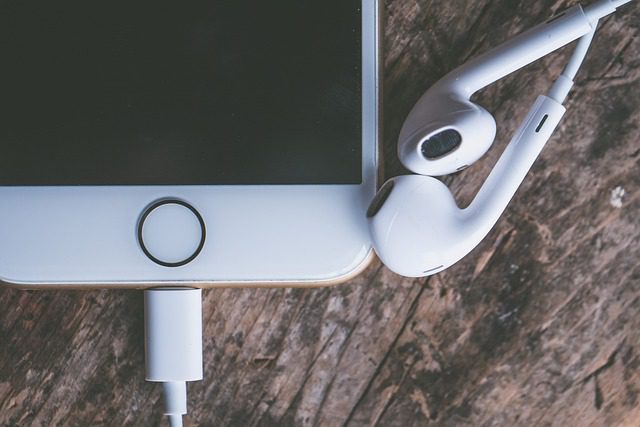
Welcome to the world of iPhones, where state-of-the-art technology and elegant design meet. But the iPhone cable is a silent hero in every iPhone user’s everyday life. We’ll examine this underappreciated item in more detail in this article and discuss why it merits greater recognition than it currently receives.
The backbone of your iPhone
The Lifeline of Power

There’s more to your iPhone cable than meets the eye. It is the vital component that keeps your gadget charged and operational. Your iPhone cable makes sure that your smartphone is charged so you can stay connected to the outside world whether you’re at home, at work, or on the move.
Seamless Data Transfer
Not only is your iPhone cord useful for charging. It facilitates smooth data transfer from your iPhone to other devices as well. With just a quick plug-and-play, your iPhone cable enables you to sync your music library, transfer images, and back up your data.
iPhone Cable Durability
Built to Last

It may be thin, but the iPhone cord is surprisingly sturdy. These cables are long-lasting and made to resist normal wear and tear. Your iPhone cord can withstand a lot, including being dropped, wrapped around your wrist, and tripped over by accident. It doesn’t break.
Tangle Free Design
Those days are gone when you used to struggle with tangled cables. The iPhone cable’s unique shape keeps it untangled and convenient to use and store wherever you go. Bid farewell to annoying knots and hello to hassle-free data transfer and charging.
ALSO READ
Unveiling Xiaomi 13T Pro | Xiaomi’s 13T Pro Performance and Features | A game changer in Smartphone Industry
Beyond the basics

However, the iPhone cable’s adaptability is what makes it beautiful. The options are endless, ranging from connecting to speakers and headphones to charging your device. Your iPhone cord can also be used to connect to external displays with the correct adapters, creating a whole new realm of entertainment and work.
An Essential Companion
Your iPhone cable is more than just an accessory in the fast-paced world of iPhones, it’s a necessary partner that keeps you linked, charged, and prepared for each day that comes. So remember to be grateful for the inconspicuous iPhone wire that powers it all the next time you reach for your phone.
Advantages and Disadvantages of iPhone Cables
Advantages
- Reliable Power: it makes sure your gadget is always charged so you can stay connected no matter where you travel.
- Seamless Data Transfer: makes it simple to transfer data between your iPhone and other gadgets.
- Durability: Long-lasting use is ensured by construction that is resistant to normal wear and tear.
- Tangle-free design: Simple to use and store without having to worry about tangling wires.
- Versatility: provides countless options for connection with different peripherals and accessories.
Disadvantages
- Limited Length: standard iPhone cables are often shorter than ideal, they might make charging more difficult.
- Compatibility issues: Not all iPhone models or iOS versions are compatible with certain third-party connectors.
- Damage risk: Over time, constant bending or tugging could cause wear and tear and could damage the cable.
- Higher cost: Official Apple cables are more expensive than third-party alternatives.
- Overheating: Rarely, problems with overheating may arise from extended use or defective cables.
Conclusion
In conclusion, even though the iPhone cable has some restrictions and downsides, these are greatly outweighed by its benefits. With its capacity to power up your device and enable smooth data transfer, its dependability, robustness, and adaptability make it an essential item for any iPhone user. Let’s toast to the unassuming iPhone cable and hope it keeps us linked for many more years to come.
FAQs
- What type of cable does the iPhone use?
USB-C to Lightning cable
- Which cable is best for iPhone?
Apple Vowen-C USB Cable
Even though Apple’s cable costs a little more and isn’t certified by a third party, it offers 240-watt rapid charging, which means that devices like MacBooks and iPhones can reach 100% battery life as quickly as possible.
- Is the iPhone charger type A or C?
With a USB-C to Lightning cable, you can charge and sync your AirPods, AirPods Pro, iPhone, iPad, or iPod touch, charge a Siri Remote, and more.
- Is type C better than Lightning?
USB-C is more dependable and speedier. Compared to Lightning, it can transfer more power and data across a wider variety of devices. USB-C can transfer data at 40 Gbps, which is over 85 times quicker than Lightning’s 480 Mbps maximum. USB-C can withstand up to 240W, while Lightning can only manage up to 20W.

I’m Rashail Francis. I just graduated from Forman Christian College, Lahore Punjab with a degree in Information Technology & computer science. Currently studying MSC in Machine Learning. Other than my studies I am a Vocalist and a Musician, and have worked with different musical societies in FC and Lahore. I learned Indian Classical Music when I was 12. I play harmonium, piano, and guitar. Recently, I have started learning music production.

